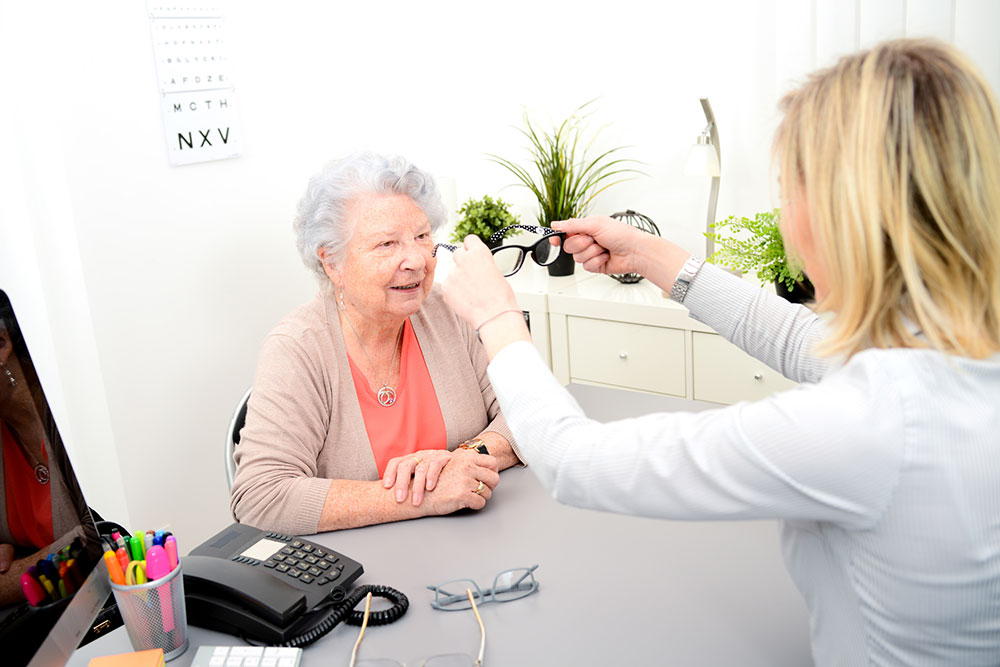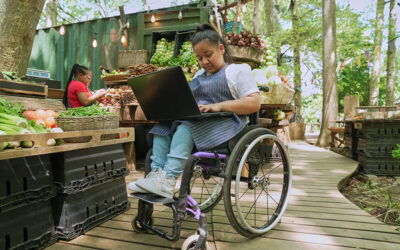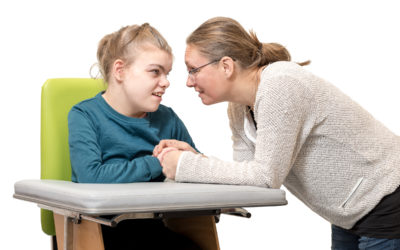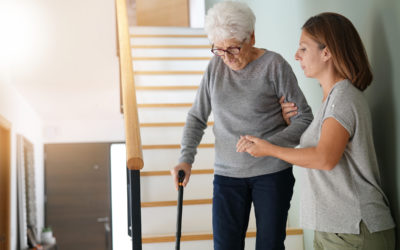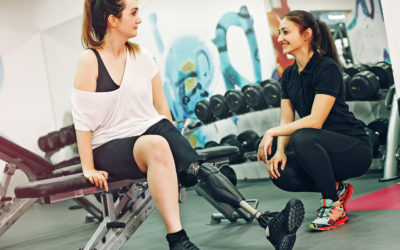Visual Impairment
Visual impairment, also known as vision loss, is a decrease in the ability to see to a degree that causes problems which are not fixable by glasses or contact lenses. In the UK, there are almost 2 million people living with sight loss.
Most commonly affected
As we age, we are increasingly likely to experience visual impairment. According to RNIB, one in five people aged 75 and over are living with sight loss and one in two people aged 90 and over are living with sight loss. Almost two-thirds of people experiencing visual impairment are women, and those from black and minority ethnic communities are at even greater risk of sight loss. Adults with learning disabilities are 10 times more likely to be blind or partially sighted than the general population.
Common conditions
There are a range of eye conditions which can result in visual impairment; we have outlined the most common below. The RNIB also details all the different types here.
Macular degeneration
Age-related Macular Degeneration (AMD) is the most significant cause of blindness in adults. It can affect persons of all ages, but mainly those over 60. It primarily affects the central vision and can lead to blurred vision. There are two types of macular degeneration; “dry” and “wet”. The majority of AMD cases are the dry variant.
Being ‘wet’ or ‘dry’ dictates whether the condition can be treated or not, its progression, and how it is monitored. Wet AMD is caused by the abnormal growth of blood vessels in the part of the retina called the macula. People with wet AMD will often experience sudden, sometimes significant changes in their vision.
Treatment is usually via an injection into the eye which is designed to stop vision loss getting progressively worse. It will not, however, recover vision which has already been lost. Prompt treatment is the key to halting the progression of the condition. Dry AMD is an untreatable gradual deterioration of the macula as the retinal cells die off and are not renewed. The speed of progression of dry AMD varies from a number of months to several years.
Glaucoma
Glaucoma is a hereditary condition which can cause blindness if not managed with daily eye drop medication. It causes optic nerve damage as a result of changes in the pressure within the eye and can lead to loss of peripheral (side) vision. Consequently, glaucoma sufferers may not be able to see people or things approaching from the side.
Diabetic Retinopathy
Being diabetic can have a negative effect on the eyes as well as other major organs in the body. This condition causes central vision to become unreliable which means tasks which require accuracy of vision such as driving and reading can become difficult. 40% of people with Type 1 Diabetes and 20% of those with Type 2 Diabetes develop some form of Diabetic Retinopathy.
Cataracts
Cataracts become more common as we age. Over time, the lens inside the eye gradually changes and becomes less transparent and misty. This condition can worsen over time leading to blurred vision, changes in the ability to see colours correctly and sensitivity to glare.
Childhood blindness
According to RNIB, two in every 1,000 (0.2%) children and young people in the UK up to the age of 25 have some form of vision impairment. Two-thirds of childhood vision impairment is present from birth or diagnosed in the first year of life. The most common causes are Cerebral Vision Impairment (48%), where there has been damage to the visual pathways in the brain, affecting the way that visual information is processed. Other common conditions include disorders of the optic nerve (particularly optic atrophy) and disorders of the retina.
Psychological Impact
Being told about a visual impairment that can’t be treated can initially be difficult to come to terms with. Common reactions can include anger, shock or denial before individuals eventually learn to live with their condition. The adjustment period can be assuaged by generally making life simpler and more manageable when it comes to living arrangements and the ability to remain independent.
Home adaptions for visually impaired people
Most visually impaired people can continue to live at home independently. If living alone, those with sight loss may find a range of home adaptations useful, for example, a big button telephone (landline and mobile, available from RNIB), a suitable computer with big-button keyboards, screen display software and text readers, a community alarm and brighter natural and artificial lights. Read more.
Sight loss and stairs
Out of all places in the home, stairs can quickly become a hazard for visually impaired people, creating a trip or fall risk. The installation of a means of travelling between floors that doesn’t involve using stairs, such as a domestic home lift, can mitigate the danger and enable people with visual impairment to improve their occupational performance, and therefore facilitating independent living.
Benefits of a Stiltz Home Lift in particular
Features of a Stiltz Home Lift which would benefit someone who is visually impaired include:
- Internal LED Downlights – These are programmed to turn on once the user has entered the lift and remain on for the entire journey. As the lighting is ambient within the lift it doesn’t create harsh shadows which can cause problems for those with limited vision.
- Half Height Light Curtain – comes as standard on all Stiltz home lifts and means if a limb or item carried within the lift protrudes from within, the lift will either not move or will stop until the obstruction is removed
- Interior Telephone – In the very unlikely event that the lift stops while the user is travelling in it, a phone is fitted as standard and service/breakdown numbers are pre-programmed into the handset
- Optional In-Car Seat – this is a popular option selected by customers. The Classic range accommodates a fold-down seat while the Duo+ has a stylish, moulded perch seat.
- Optional Interior Grab Rail – Offers increased security for the occupants of the lift when getting into and out of the lift, and during travel
- A simplistic Control Panel with large buttons with convex/concave surfaces to help with differentiation
- Low Access Anti-trip Threshold with easy door opening/closing
Read more about Duo+ (standing lift) and Trio+ (wheelchair home lift)
Useful Legislation
If disability compromises occupational performance, a Disabled Facilities Grant may be available to assist with the installation of necessary equipment. A DFG is provided by a local authority to install home lifts, stairlifts, ramps, accessible baths/showers and other accessible adaptions in the home. These are provided with the aim of enabling disabled adults and children to lead more independent lives whilst supported by families and carers.
Notes from our resident Occupational Therapist, Stuart Barrow
“Being visually impaired shouldn’t mean an individual cannot live an independent lifestyle if a home is adapted appropriately. Many of the features on a Stiltz Home Lift can effectively assist someone who is visually impaired. The internal LED lighting is an important feature, alongside the in-car seat, in-car grab rails, the low access anti-trip threshold and the control panel with large buttons, to name a few. All of these features may enable an individual to safely and confidently travel between floors”.


Stiltz Homelifts Occupational Therapist and owner of Promoting Independence
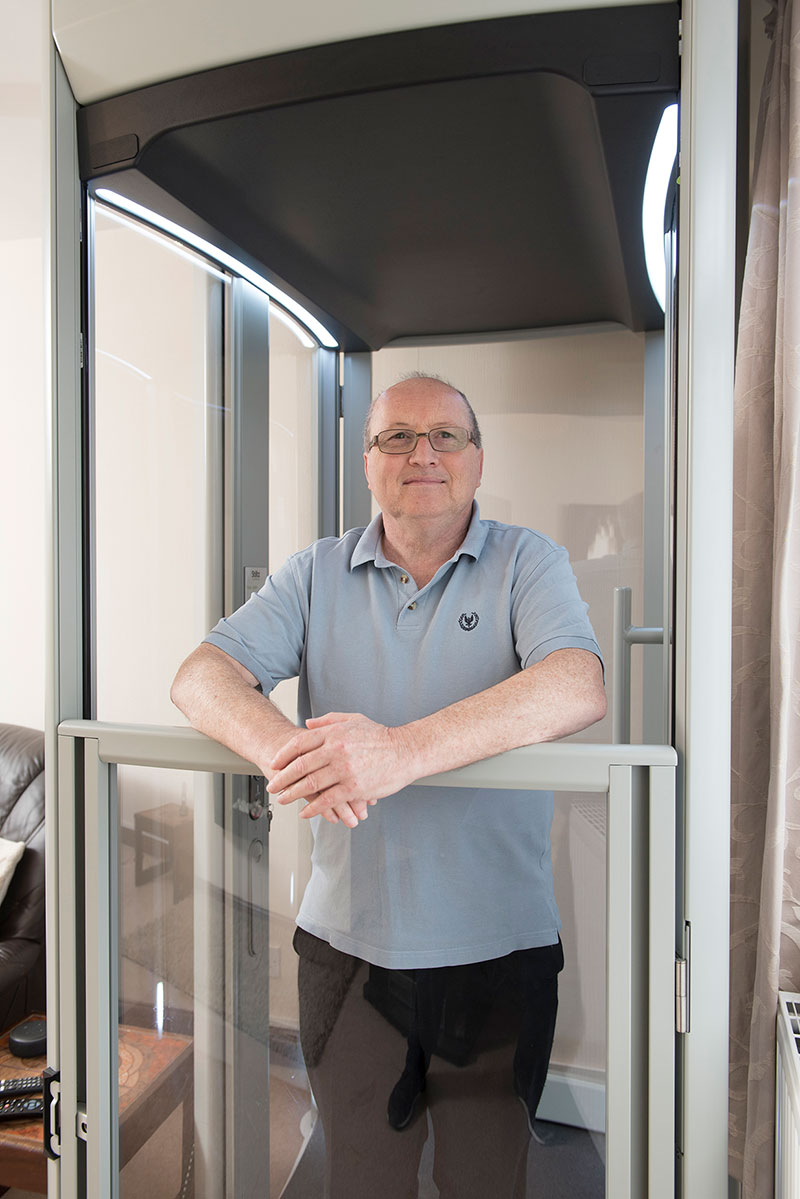

Steve Waller, 64, is visually impaired and also has limited mobility following a stroke. Initially, he considered a stairlift but due to his narrow staircase, space was an issue. Transferring independently to a stairlift seat at the top of the stairs also presented a safety risk, especially with a progressive condition. Therefore a ‘future-proofed’ wheelchair accessible Stiltz Trio+ Homelift was recommended by Steve’s Occupational Therapist so if he needed a wheelchair in years to come, he could still move between floors safely and independently. The lift’s simplistic, intuitive controls provide Steve with added support due to his visual impairment and restricted movement. He chooses to operate the home lift by using the remote control whilst sitting on a chair within his home lift.
Read Steve Waller’s Customer Story here – this link will open in a separate window.
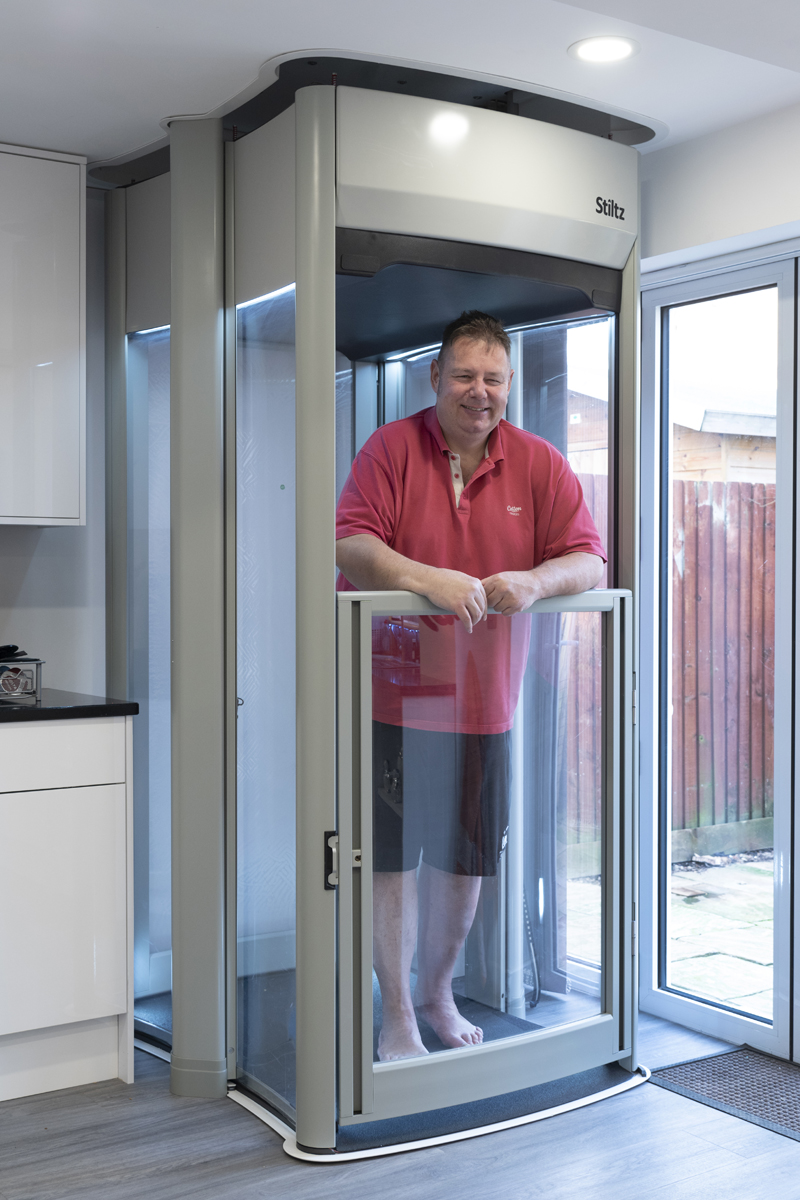
The installation of a means of travelling between floors that doesn’t involve using stairs, such as a domestic home lift, can mitigate the danger and enable people with visual impairment to improve their occupational performance, and therefore facilitating independent living…”


